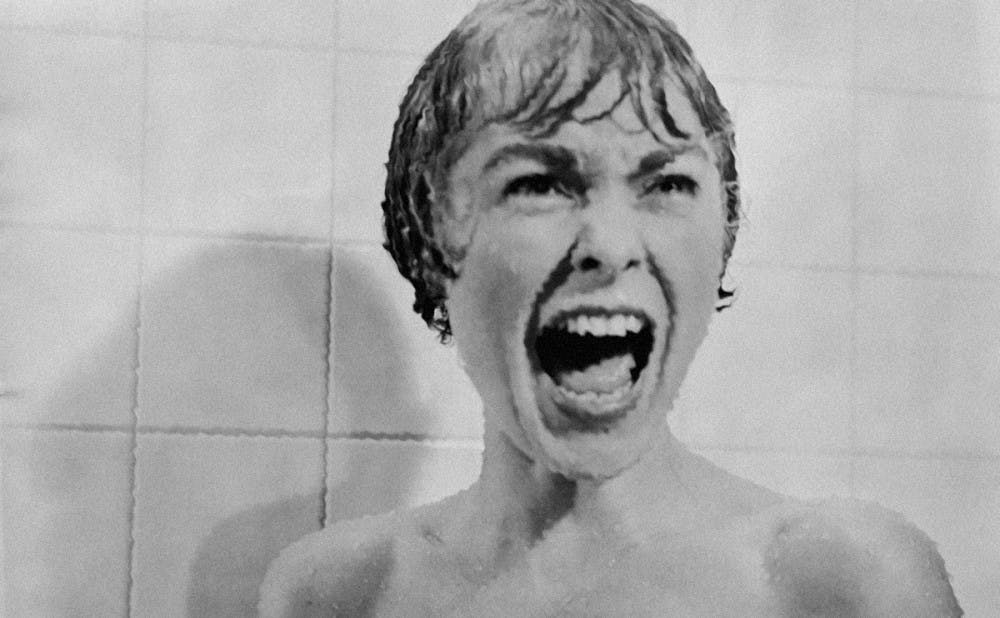Imagine the date is June 16, 1960 — the premiere of Alfred Hitchcock’s newest film, “Psycho.” You are sitting in a crowded theater, filled with bated breath and tense muscles. A shadow approaches Marion Crane’s shower curtain, a barely visible human form with an arm slightly raised. The music builds. The shower curtain is suddenly ripped to the side. The audience hears Crane’s screams as a knife swings down from the ominous figure. And Crane is brutally murdered, the water from the shower still rushing down the drain with her blood.
I have often imagined this cinematic moment, an event that permanently transformed and shaped the film industry for generations to come. The possibility for a single film to have such power was fascinating, leading to “Psycho”’s permanent place in my list of favorite movies.
Alfred Hitchcock’s “Psycho” was a cinematic masterpiece of the 1960s, telling a story of love and romance blended with shocking horror. The lead actress, Janet Leigh, plays Marion Crane, a young woman attempting to steal $40,000 to pay off her boyfriend’s ex-wife and begin a new life in California. When she gets trapped at Bates Motel, owned by Anthony Perkins’ character, Norman Bates, and his mother, the story takes a terrifying turn. It is up to Crane’s sister and boyfriend to solve the mystery without meeting her same fate.
As a genre, horror had existed since the beginning of film, dominated by monstrous creatures of the night and medical experiments gone wrong. Audiences had been captivated with films from the 1922 classic, “Nosferatu,” to James Whale’s “Frankenstein.” Yet Hitchcock provided another source of terror, one more hidden, more disturbing than these demonic beasts. No longer were the monsters physical manifestations of our worst nightmares; they found their home within our minds, barely out of reach and out of sight. This radical departure shocked movie viewers and film critics alike, as Hitchcock cleverly manipulated his audience throughout the film.
Not only that, “Psycho” challenged the strict Hays Code placed on films of the time that banned everything from flushing toilets to the depiction of blood. “Psycho” was the new extreme, even if its overtly violent content still does not match today’s standards. Following the shocking murders carried out by the Butcher of Plainfield in the late 1950’s, Ed Gein, the real-world inspiration for “Psycho,” this novel film trope of hidden monsters exhibited shocking parallels to 1960’s society. Henry Adolph Busch Jr. was even inspired by the film, committing similar crimes as “Psycho” depicted until he was executed in 1962.
In his book, “The Moment of Psycho: How Alfred Hitchcock Taught America to Love Murder,” film critic David Thomson writes, “Most films of the ‘50s are secret ads for the American way of life. ‘Psycho’ is a warning about its lies and limits.”
And entering the 1960s, “Psycho” foreshadowed the social upheaval yet to come. No longer were films and media merely seeking to build the false realities of the American identity and promote its conformity, from movies like “Best Years of Our Lives” to shows like “I Love Lucy.” The breakdown of this “lie,” as David Thomson states, is most apparent in “Psycho,” as the real world finally caught up to the film industry.
I found myself drawn to this film for both its historical and cultural significance in this early 1960s society and even into today. “Psycho” was my introduction into psychological thrillers, a genre that has long since captivated me. As a lover of Agatha Christie and murder mysteries in general, I found “Psycho” to be a more modern rendition, one in which Christie’s own Poirot and Miss Marple themselves could not guess the ending. The clues and puzzles to solve the mystery required a new kind of analysis, one of the mind, rather than scavenger hunts around the scene of the crime. It keeps the detectives and even the audience themselves guessing until the end of the film, as Hitchcock intended.
The monsters Hitchcock depicted in “Psycho” continue to live among us, expressing themselves in often disturbing, haunting ways. This nightmarish possibility inspired films to this day, from “The Girl on the Train” to “Shutter Island.” Modern moviemakers now often attempt to create similarly dramatic endings, in which the audience is left shocked, nearly unable to believe the film’s true ending. Without this momentous contribution to film, who’s to say we wouldn’t still be absorbing the “secret ads” Thomson describes through our TV screens and in our theaters?
Get The Chronicle straight to your inbox
Signup for our weekly newsletter. Cancel at any time.

